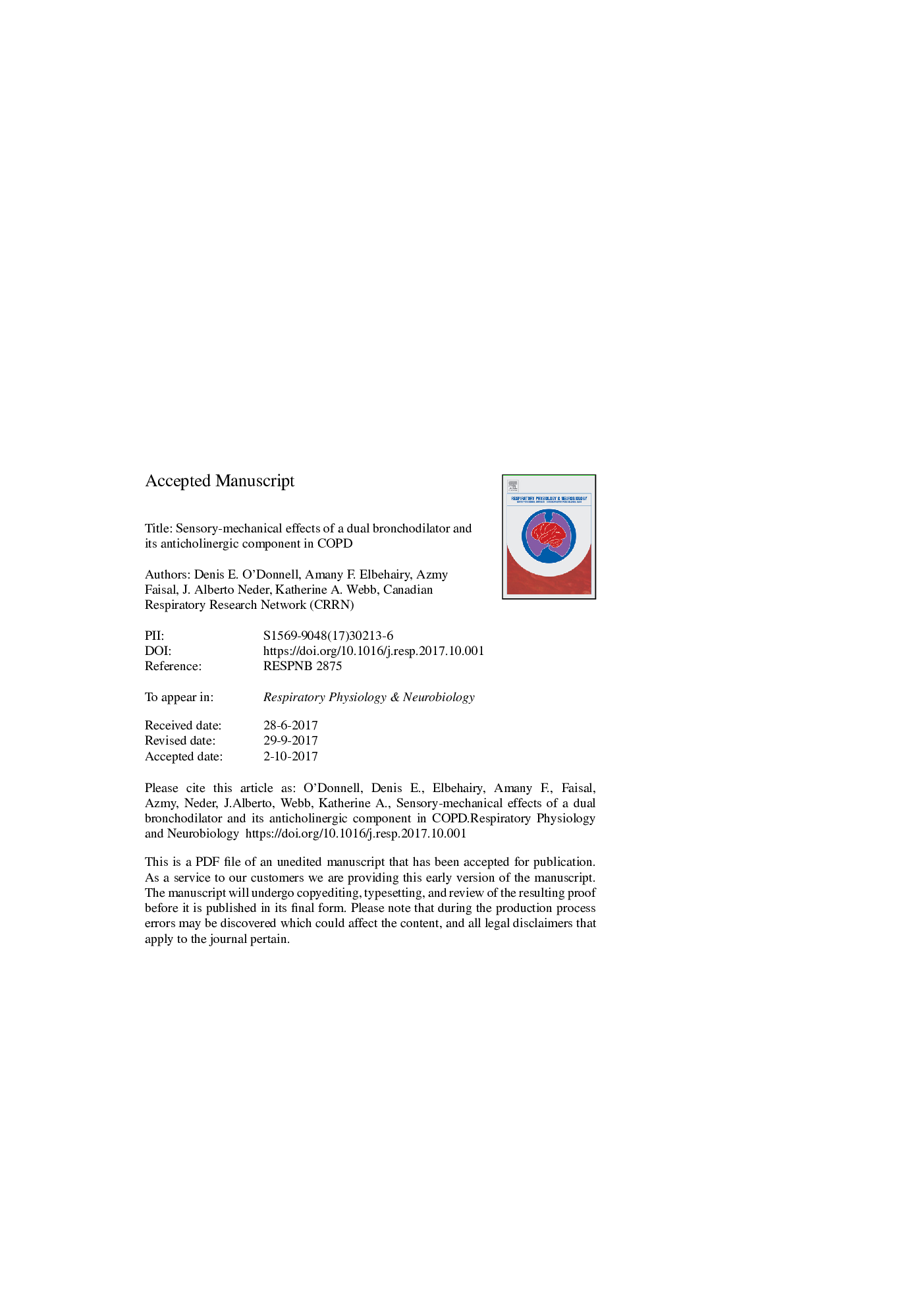| Article ID | Journal | Published Year | Pages | File Type |
|---|---|---|---|---|
| 5594052 | Respiratory Physiology & Neurobiology | 2018 | 33 Pages |
Abstract
This randomized, double-blind, crossover study examined the physiological rationale for using a dual long-acting bronchodilator (umeclidinium/vilanterol (UME/VIL)) versus its muscarinic-antagonist component (UME) as treatment for dyspnea and exercise intolerance in moderate COPD. After each 4-week treatment period, subjects performed pulmonary function and symptom-limited constant-work rate cycling tests with diaphragm electromyogram (EMGdi), esophageal (Pes), gastric (Pga) and transdiaphragmatic (Pdi) pressure measurements. Fourteen subjects completed the study. Both treatments improved spirometry and airway resistance. UME/VIL had larger increases in FEV1 (+0.14 ± 0.23 L, p < 0.05) but no added reduction in lung hyperinflation compared with UME. Isotime during exercise after UME/VIL versus UME (p < 0.05): “unpleasantness of breathing” fell 0.8 ± 1.3 Borg units; mean expiratory flow and ventilation increased; Pdi and Pga decreased. There were no treatment differences in endurance time, breathing pattern, operating lung volumes, inspiratory neural drive (EMGdi) or respiratory muscle effort (Pes swings) during exercise. UME/VIL compared with UME was associated with reduced breathing unpleasantness reflecting improved airway and respiratory muscle function during exercise.
Related Topics
Life Sciences
Biochemistry, Genetics and Molecular Biology
Physiology
Authors
Denis E. O'Donnell, Amany F. Elbehairy, Azmy Faisal, J. Alberto Neder, Katherine A. Webb, Canadian Respiratory Research Network (CRRN) Canadian Respiratory Research Network (CRRN),
